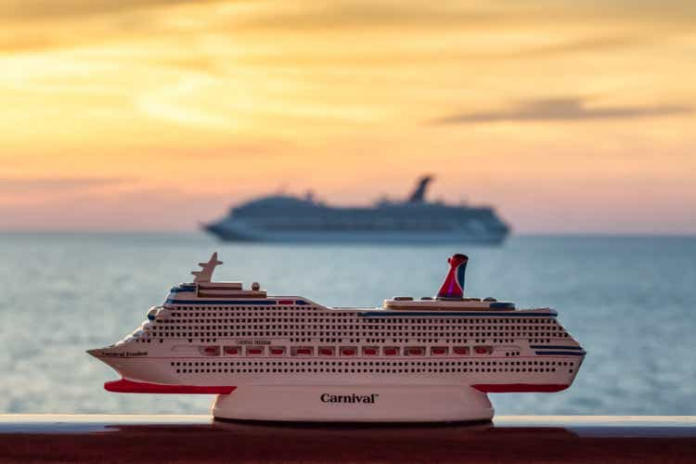Wells Fargo is predicting another strong year for the cruise industry and has reaffirmed its Overweight rating on the two largest operators in the industry.
With the addition of new ships, new islands and strong booking trends, Wells Fargo analyst Daniel Politzer sees 2025 as another “above-algo” year and raised his yield expectations for both Carnival Corporation (NYSE:CCL) and Royal Caribbean (NYSE:RCL).
“While there is no one-size fits all algo in cruises, most operators target somewhere between 2-4% annual yield growth, 1-2% annual adjusted cruise cost growth, and depending on the operator, some degree of capacity growth. FY23 and FY24 are above algo years, and we think that 2025 could potentially be an above algo year as well, reflecting strong 2025 consumer demand/early bookings indicators, plus moderating cost growth,” Politzer says in his research report.
For Carnival (CCL) “everything is churning in the right direction.” The cruise operator remains booked at or above the higher end of all its typical ranges, and all markets are trending well, especially in Alaska. In a conversation with CEO Josh Weinstein and Senior Vice President of IR Beth Roberts, private islands remain a key focus for the company with Celebration Key set to open July 2025. With the ability to accommodate up to 2.2M passengers annually, Carnival plans to pair Celebration Key and Half Moon Cay as a “compelling” consumer offering to further sell the Caribbean, and nearly double private visitation to the private islands to 9-10M.
Carnival’s (CCL) balance sheet is its biggest share price overhang. The company acknowledges that its optimal leverage could be 3-3.5x (still above pre-pandemic of ~2x). Carnival views the industry as one with a lot of operating leverage, but with geopolitical risks and fuel volatility, combined with lower interest expense, the company believes an investment grade balance sheet is most appropriate.
For 2025, Wells Fargo hiked its 2025 revenue and EPS estimates for Carnival (CCL) by 1.0% and 10.9%, respectively, to $25.9B and $1.41. This compares to the Street consensus estimates of $25.9B and $1.42, respectively.
For the second-largest cruise operator, Royal Caribbean (RCL), Politzer sees the stock reaching $200 per share based on the combination of modestly higher yields and the potential for share repurchases which would equate to EPS of $14 in 2025 and EPS of $17 in 2026.
In his meeting with Royal Caribbean CFO Naftali Holtz and Vice President of IR Michael McCarthy, Politzer finds that the company is optimistic on its ability to execute its long-term strategy of low single-digit yield growth and 5-6% capacity growth. Royal Caribbean (RCL) is seeing very good bookings in Europe, Alaska, and China, and while China cruise supply is much smaller than it was in 2019, demand remains strong.
The company is also growing its short capacity cruises, primarily out of Orlando, Florida. The Orlando/Port Canaveral itinerary begins with 3-4 nights in Disney World (DIS) plus 3 nights on a Royal Caribbean (RCL) ship. This strategy targets Orlando resort vacationers, new-to-cruise customers, and helps shorten the time between cruises.
Politzer raises his 2025 revenue and EPS estimates for Royal Caribbean (RCL) by 1.2% and 4.8%, respectively, to $17.9B and $12.60 versus the consensus estimates of $17.7B and $12.70, respectively.




